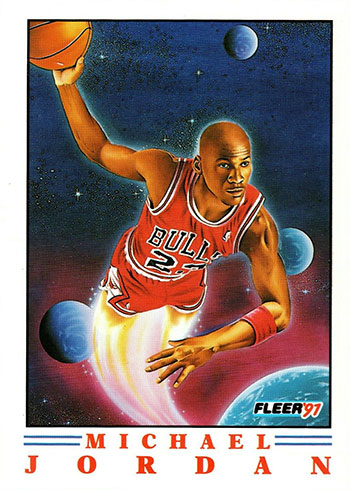Home »
Misc »
How much are 1990 basketball cards worth
How much are 1990 basketball cards worth
25 Most Valuable 1990 NBA Hoops Cards
More...
Looking back on the 1990 NBA Hoops cards set, I'd have to say it was easily one of my favorite basketball card sets of the era and maybe even all-time.
I thoroughly enjoyed the 1989 Hoops set that preceded it and those that came after.
But, I simply couldn't get enough of these cards...
I even received several of the 1990 Hoops "Collect-A-Books" for Christmas one year, and I vividly remember reading through those miniature biographies of many of my favorite players over and over.
There were so many great stars of the day in this set, multiple cards with Michael Jordan on them, and even some fun subsets like the NBA Inside Stuff, Stay In School, and Just Say "No" To Drugs cards.
A kid had so much to love within this 440-card checklist.
And in this guide, we look at the 25 most valuable.
Let's jump right in!
Ross Uitts - Owner
Love sports cards?
Get my weekly newsletter with the latest hobby updates delivered straight to your inbox!
Subscribe
I do want to be 100% clear that most of the cards in this set sadly have no value these days.![]()
Like the 1990 Fleer and SkyBox sets, there were just so many of these cards printed.
And to have any value at all, the cards on this list will need to be graded in PSA 10 gem mint condition...meaning they're nearly flawless.
Now that we've got that out of the way, let's take a look at the list:
1990 Hoops #65 Michael Jordan
Estimated PSA 10 Value: $550
The way things are going with all of Jordan's cards, this one may soon overtake the top spot on this list.
Two or three years ago, you could buy this card in a PSA 10 holder for $20-$30.
But, now, thanks to 'The Last Dance' documentary on ESPN, prices of Michael Jordan cards and those of many other players of that era have exploded to new heights.
I always enjoyed this card because of the image of Jordan throwing one down with authority as a helpless Miami Heat defender, who I think is Glen Rice but am not quite sure, looks onward.
Jordan's performance during the 1990-1991 season was incredible as he took home MVP honors, led the league in scoring, made the All-NBA and All-Defensive teams and led the East to victory over the West in the All-Star game.
He also won his first NBA championship after he and the Bulls defeated the Los Angeles Lakers 4-1.
1990 Hoops #223 Sam Vincent
Estimated PSA 10 Value: $450
As I mentioned earlier, Mark Jackson's card isn't the only one in this set whose value is driven by someone else appearing on it.
If you look closely at Sam Vincent's card, you'll see Michael Jordan down below, watching as Vincent soars above ready to lay one in the hoop.
Jordan's appearance on the card isn't such a big deal in and of itself; it's the fact that he's wearing a jersey with the number 12 on it, the only time he did so.
Before the Bulls and Magic played the game on February 14, 1990, during which this image was taken, someone allegedly stole Jordan's regular jersey with the number 23 on it, so he had to wear this replacement jersey instead.
It didn't contain his last name on the back of it either, obviously, but lucky for Jordan and the Bulls, the jersey was at least a good fit.
Despite Jordan putting up 49 points, the Magic ended up winning in overtime.
Interestingly, there are two variations of Sam Vincent's card in this set: the one distributed in first series packs with Jordan on it and another one the company changed up for second series packs that isolated Vincent dribbling up the court.
1990 Hoops #205 Mark Jackson
Estimated PSA 10 Value: $425
Mark Jackson was one of the best point guards ever to play the game but you may be surprised to find him at the top of this list.
The reason this card has garnered so much attention and such a hefty price tag has nothing to do with Jackson himself and everything to do with who is seated courtside to his left: the infamous Menendez brothers.
Sometime between August 20, 1989, when they murdered their parents in Beverly Hills, CA and their arrest on March 8, 1990, Lyle and Erik Menendez attended this game at Madison Square Garden in which this image of Jackson was snapped.
Pricing on this card has cooled a bit since this story first came to light but others in PSA 10 condition have previously sold for hundreds of dollars.
And it's not the only card in this set whose value is driven by someone else appearing on it other than the featured player...
1990 Hoops #5 Michael Jordan All-Star
Estimated PSA 10 Value: $300
While the base cards in this set featured grey borders, the All-Star cards turned things up a notch with their gold borders.
The city of Miami hosted the 1990 All-Star game that was packed with superstars and featured 19 future Hall of Famers across both conferences.
In fact, the entire 12-man roster for the East was comprised of future Hall of Famers with Jordan headlining them all.
Jordan and Charles Barkley each had 17 points as they lead the East to a 130-113 victory over the West, but it was Magic Johnson that took home MVP honors after scoring 22 points and putting on quite a show.
They say Jordan's fadeaway jumper was unstoppable and based on this image you can see exactly why.
1990 Hoops #358 Michael Jordan
Estimated PSA 10 Value: $250
Cards #355-381 in the set served as team checklists and featured artwork of each team's biggest star of the day as illustrated by various artists.
Ken Goldammer had the honor of creating the Bulls team checklist and did not disappoint with this beautiful image of MJ going up for a reverse jam.
It even looks like those are the Air Jordan III's that he's wearing but I'm not quite sure.
1990 Hoops #279 Shawn Kemp Rookie Card
Estimated PSA 10 Value: $175
Shawn Kemp exploded onto the basketball scene in the early 90s with his incredible rebounding skills and his explosive highlight-reel dunks.
His vertical leaping ability was off the charts and I even remember hearing stories as a kid about how he could snatch a quarter off the top of the backboard.
Kemp spent time with multiple teams throughout his NBA career but his most memorable were undoubtedly those he spent as a member of the Sonics.
He nearly won a title during the 1995-1996 season when he and teammate Gary Payton led Seattle to the NBA championship, eventually falling 4-2 to that infamous Chicago Bulls team that went 72-10 in the regular season.
Even though the image on this card isn't the most exciting, I still love the look and feel to it thanks to that old Sonics jersey and logo as Kemp looks like he's about to put a move on someone down in the post.
1990 Hoops #391 Gary Payton Rookie Card
Estimated PSA 10 Value: $150
Drafted second overall in the 1990 NBA draft, expectations were sky high for Gary Payton, the electrifying youngster out of Oregon State.
And, although he sputtered early on, Payton lived up to the hype and went on to develop into one of the greatest point guards in NBA history.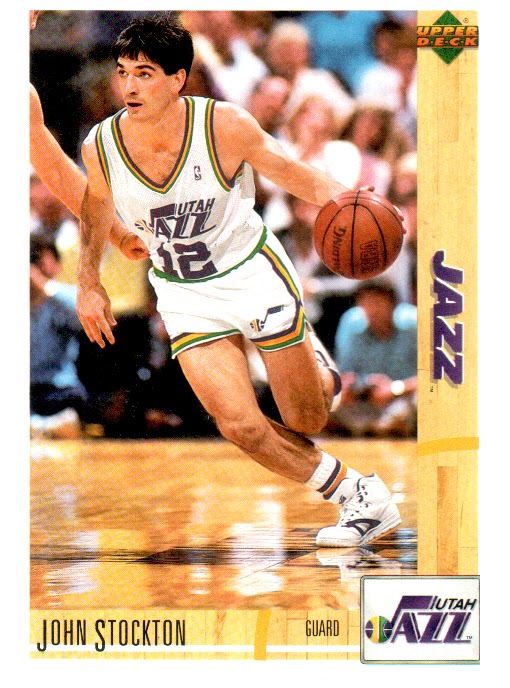
Nicknamed "The Glove," Payton became a shutdown defender and was selected to the NBA All-Defensive First Team nine times and remains the only point guard ever to be named the NBA Defensive Player of the Year.
His offensive skills were just as impressive as he routinely posted double-doubles in points and assists.
To put it simply, Payton was one of the most complete guards in the history of the game and his 1990 Hoops rookie card is must-have for basketball card collectors.
1990 Hoops #382 Michael Jordan's Playground
Estimated PSA 10 Value: $125
.
1990 Hoops #39 Larry Bird
Estimated PSA 10 Value: $100
.
1990 Hoops #113 Tim Hardaway Rookie Card
Estimated PSA 10 Value: $100
There are many special things about the game of basketball and one I've always admired is how not only the players themselves can gain fame, but so can their signature moves.
From George Gervin's "finger roll" to Kareem Abdul Jabbar's "skyhook" to Hakeem Olajuwon's "dream shake," there have been so many unstoppable moves.
One that I always admired in particular, though, was Tim Hardaway's devastating "killer crossover" that nearly broke the ankles of many defenders who tried to stop it.
While he still hasn't cracked the Hall of Fame, Hardaway was certainly one of the most explosive and feared guards of his era.
His ability to blow by defenders and attack the basket is on full display on his 1990 Hoops rookie card.
1990 Hoops #157 Magic Johnson
Estimated PSA 10 Value: $100
.
1990 Hoops #270 David Robinson Rookie Card
Estimated PSA 10 Value: $100
Despite the "Rookie of the Year" tag on this card, this is not David Robinson's rookie card since he had made his rookie card debut in the 1989 Hoops set the year before.
This card is simply a tribute to Robinson being named "Rookie of the Year" for his dominating 1989-1990 season in which he averaged 24.3 points and 12 rebounds per game.
While the Hall of Fame center's career was put on hold temporarily due to his Naval service commitment upon graduation from Annapolis, he went on to become one of the best centers in NBA history.
On this card, you can see what a chore it was to defend Robinson down low as he posts up on the Cavaliers' Larry Nance while Mark Price looks on in the background.
1990 Hoops #385 Magic Johnson & Michael Jordan Super Streaks
Estimated PSA 10 Value: $100
As a kid, I used to love watching NBA Inside Stuff on television as Ahmad Rashad reviewed highlights from previous games and interviewed players on a wide range of topics.
So, I was excited when I first saw these NBA Inside Stuff cards in the 1990 Hoops set; there were a couple with Michael Jordan on them (including this one), and I think Karl Malone was riding a horse on one of them.
Anyway, this one that was dubbed "Super Streaks" paid tribute to a couple of streaks that Jordan and Magic Johnson were chasing heading into the 1990-1991 season.
Johnson was looking for his third straight MVP while Jordan was looking for his fifth straight scoring title.
The good news for Jordan was that he kept his streak alive, but unfortunately for Magic, his streak was broken up by...Jordan.
1990 Hoops All Rookie Team Card
Estimated PSA 10 Value: $100
Technically, this card isn't part of the set checklist since it was part of a mail-in offer listed on packs of regular 1990 Hoops cards.
The card pays tribute to the 1989-1990 All-Rookie Team that consisted of David Robinson, Vlade Divac, Pooh Richardson, Tim Hardaway and Sherman Douglas.
Robinson is shown on the front of the card hoisting his "Minute Maid Orange Soda NBA Rookie of the Year" trophy overhead while the other four players appear on the reverse side.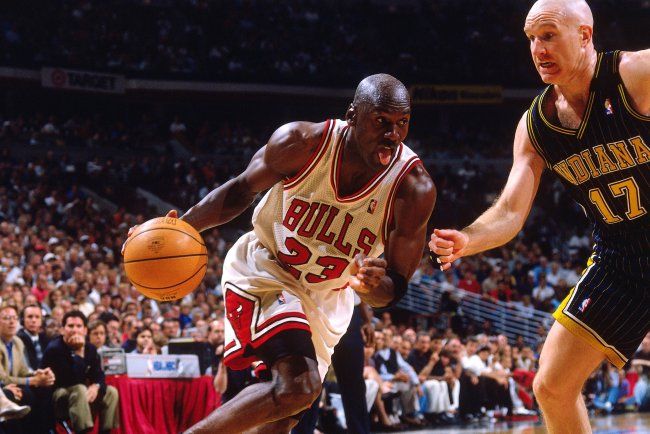
1990 Hoops #2 Larry Bird All-Star
Estimated PSA 10 Value: $75
.
1990 Hoops #18 Magic Johnson All-Star
Estimated PSA 10 Value: $75
.
1990 Hoops #109 Dennis Rodman
Estimated PSA 10 Value: $75
.
1990 Hoops #127 Hakeem Olajuwon
Estimated PSA 10 Value: $75
.
1990 Hoops #225 Charles Barkley
Estimated PSA 10 Value: $75
.
1990 Hoops #248 Drazen Petrovic Rookie Card
Estimated PSA 10 Value: $75
.
1990 Hoops #69 Scottie Pippen
Estimated PSA 10 Value: $60
.
1990 Hoops #292 Karl Malone
Estimated PSA 10 Value: $50
.
1990 Hoops #36 Dominique Wilkins
Estimated PSA 10 Value: $40
.
1990 Hoops #203 Patrick Ewing
Estimated PSA 10 Value: $40
.
1990 Hoops #168 Glen Rice Rookie Card
Estimated PSA 10 Value: $30
Ever since Glen Rice led the Michigan Wolverines to an NCAA title in 1989, one thing was clear: he knew how to score.
His record of 184 points that he scored in that NCAA tournament still stands today.
Rice's ability to score carried right over into the NBA without a hitch, and throughout the 1990s, he was consistently one of the premier shooters in the game.
Like Hardaway, Rice may not be a Hall of Famer but as one of the game's biggest stars throughout the 1990s, his rookie card remains popular enough to be worth around $15 in a PSA 10 holder.
1990 NBA Hoops Cards In Review
As you can see, some of the cards in this set can be worth quite a bit in top condition while some of them are barely worth enough to cover the cost of grading.
Like many sports cards of this era, they were heavily produced in such large quantities that the market is still flooded with them.
But, monetary value doesn't have to be the main driver int his hobby and nostalgic factor can still be a huge draw with this set.
Overall, the checklist contained 440 cards in total that highlighted some of the best players of the era and of all-time.
In summary, if you're looking for a basketball card set with a lot of star power that you can acquire cheaply then this is one for you.
Most Valuable Basketball Cards 1990s (Investment Guide)
Most Valuable Basketball Cards of the 1990s
Buy on eBay
While some of basketball’s greatest moments happened in this decade, the most valuable basketball cards of the 1990s don’t necessarily capture them. Why? In general, the most valuable collector items are usually rookie cards.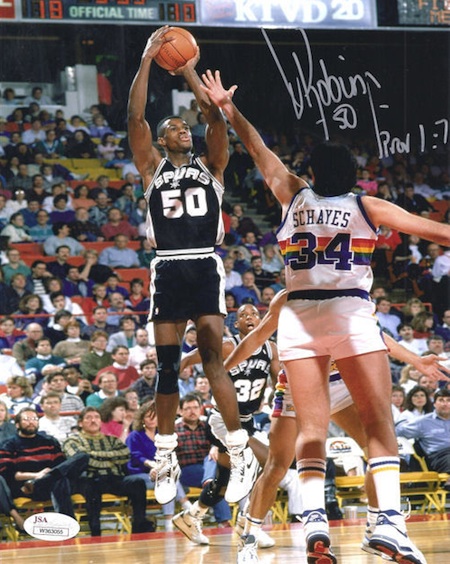 Therefore, you’ll need to find players that made their DEBUT in the 90s to find the decade’s most valuable cards. So although the 90s were dominated by Michael Jordan, he’s outranked by the guy who went on to lay siege to the NEXT decade.
Therefore, you’ll need to find players that made their DEBUT in the 90s to find the decade’s most valuable cards. So although the 90s were dominated by Michael Jordan, he’s outranked by the guy who went on to lay siege to the NEXT decade.
And that brings us to none other than Kobe Bryant. While Bryant won 5 Championships in the 2000s, his rookie season was 1996. So just like MJ who saw most of his success the decade AFTER he debuted, Bryant became a household name by winning 5 NBA titles in the 2000s. And also like MJ, his most valuable cards are from his rookie year. So let’s flash back to 1996 and find out which top the list of basketball cards worth money.
Find Your Card's Value on Card Hedger
Most Valuable Basketball Cards 1990s: Kobe Bryant
1996 Topps Chrome Refractor
Buy on eBay
A card that has skyrocketed since that tragic day in early 2020. If you want this one in grade 10 condition, be prepared to SPEND BIG. Like over $100,000 big. Don’t have that kind of cash in your bankroll? Few do. No worries, go for one of the base cards (non-refractor). You’ll still be spending thousands but you probably won’t have to refinance the house to get one!
If you want this one in grade 10 condition, be prepared to SPEND BIG. Like over $100,000 big. Don’t have that kind of cash in your bankroll? Few do. No worries, go for one of the base cards (non-refractor). You’ll still be spending thousands but you probably won’t have to refinance the house to get one!
Related Content: Kobe Bryant Rookie Card Investment Guide
1996 Finest Gold Refractor
Buy on eBay
Here’s a card that’s shot up the charts lately. For instance, in late 2020 a grade 10 cleared $70,000 on eBay. Wow. The card has a gold edge and shows Kobe doing some sort of over the back slam dunk. During the Slam Dunk Contest? Looking to reign in your investment? Seek out a lower grade version as prices fall off pretty quick with 9s being less than $20,000 and 8.5s less than $10,000.
Our Top 3 Picks For Big Gains In 2023
Shop Now eBay
Most Valuable Basketball Cards 1990s: Michael Jordan
After Kobe, we move onto the one and only Michael Jordan.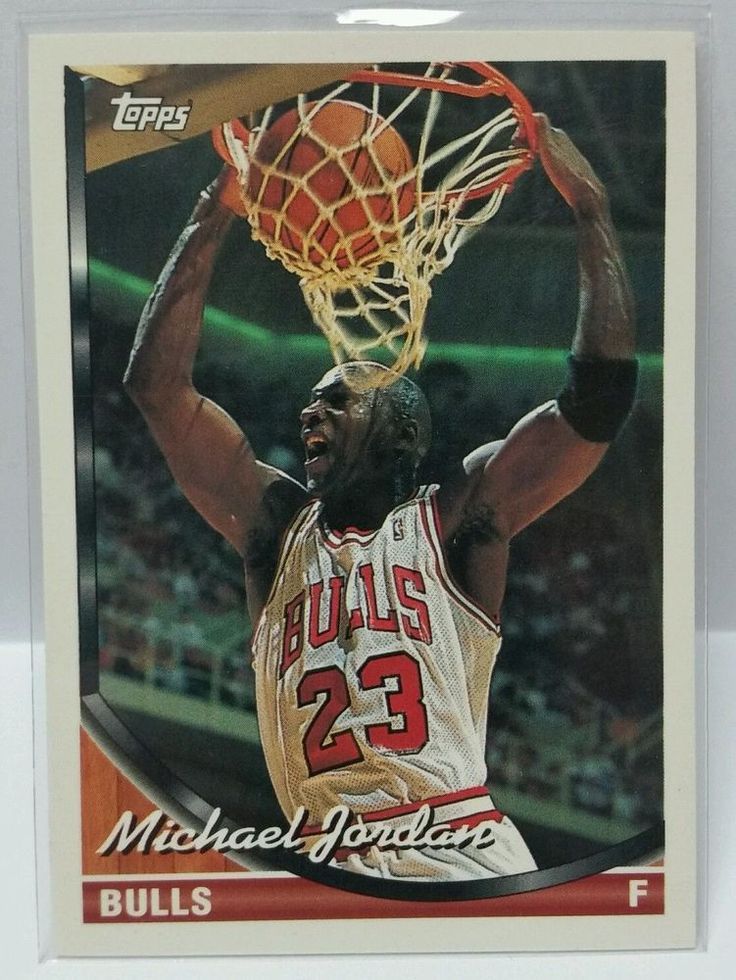 Just like Kobe. Jordan gets a whole section of his own because the list would only be full of MJ and Bryant cards if we didn’t set the two aside. At any rate, here are Jordan’s biggest cards of the decade.
Just like Kobe. Jordan gets a whole section of his own because the list would only be full of MJ and Bryant cards if we didn’t set the two aside. At any rate, here are Jordan’s biggest cards of the decade.
1997 Upper Deck Game Jersey Michael Jordan
Buy on eBay
An UNGRADED one of these broke $50,000 recently. Unbelievable. Guess that shows the true power of MJ. Aside from value, the card offers plenty looks-wise. Game-worn jersey? Check. Autograph? Check. A true gem.
1997 SPx Michael Jordan Die-Cut Autograph
Buy on eBay
There were 100 of these manufactured so there should be a few swimming around out there but they’re obviously far from common. Finding one in mint condition is an even harder task. However, if you do happen to a perfect 10 out there you’ll be spending somewhere around $50,000 to bring it home.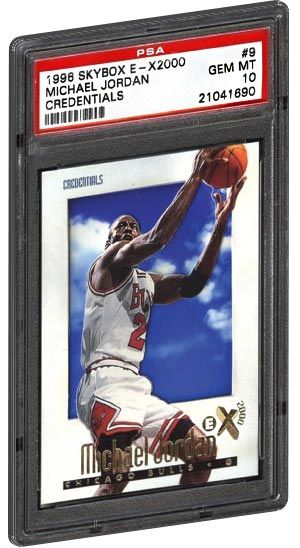 Or to take it immediately to your safety deposit box. We recommend the latter course of action.
Or to take it immediately to your safety deposit box. We recommend the latter course of action.
1997 Skybox E-X2001 Michael Jordan
Buy on eBay
We couldn’t complete this list without mentioning one of the most valuable inserts from the decade. None other than the 1997 Skybox MJ Jambalaya. And if the word Jambalaya doesn’t already get you in a festive mood, maybe the art on this card will. MJ in the middle of one of his classic slams (tongue out of course) in front of an orange and green prismatic backdrop. As far as what it’ll take to own one? North of $50,000 just for an SCG 9 grade. When it comes to the 1990s it’s easily one of the top basketball cards worthy money. LOTS of money.
1996 Flair Showcase
Shop Now eBay
Not as valuable as the others on our list but we’d thought we’d bring attention to this little diamond in the rough.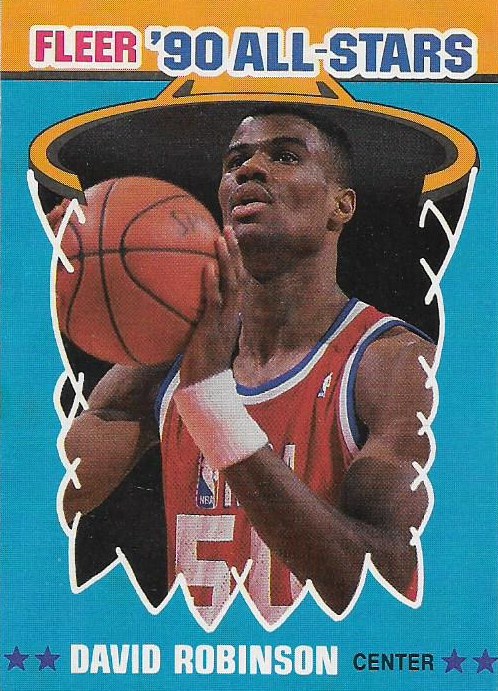 A spectacular card that features an in game photo shot of Mike looking to make a pass with light blue letters marking his name. In addition to the main photo, you’ll also notice the background image of Jordan in his iconic hands on the knees staring down the competition pose.
A spectacular card that features an in game photo shot of Mike looking to make a pass with light blue letters marking his name. In addition to the main photo, you’ll also notice the background image of Jordan in his iconic hands on the knees staring down the competition pose.
At any rate, the most attractive feature of this card is not the style. It’s the value. Even as a PSA 9 like we see above, the card is still worth more than $10,000. Just think of what a PSA 10 would fetch? Probably not enough to buy a new Lambo but certainly enough to get you in a new set of wheels if you’re in need of an upgraded ride. And with a legend like Jordan, the price should only continue to rise as the years pass.
New Michael Jordan Rookie Card Prices eBay
Most Valuable Basketball Cards 1990s: The Other Guys
So for the sake of variety, let’s see who else is out there!
1996 Topps Chrome Refractor Allen Iverson
Shop Now eBay
Unlike Kobe’s card from the same set, this one doesn’t show some sort of athletic move towards the net. Rather, just a photo that shows one of the things Iverson did best: bark down the court at teammates and foes alike. That and score points by the bunches. Grade 10s are floating somewhere around the $25,000 value range.
Rather, just a photo that shows one of the things Iverson did best: bark down the court at teammates and foes alike. That and score points by the bunches. Grade 10s are floating somewhere around the $25,000 value range.
1997 Topps Chrome Refractor Tim Duncan
Shop Now eBay
Another top rookie of the 1990s who went on to win 5 NBA titles in the following decades. Which are 5 great reasons that this card is valued at around $15,000 when in grade 10 condition!
1992 Stadium Club Shaq Bean Team
Buy on eBay
When it comes to Shaq rookie cards, this one sits atop the list. O’Neal is shown rising above the competition for a rebound or put back. As far as value goes, the card is approaching $10,000 if it’s in the right condition. A far cry from the Kobe cards we just listed but something to consider if you’re not looking to break the bank.
Most Valuable Cards 1990s Metal Universe 1997
Shop Now eBay
This is an incredibly rare set of cards that we give a category of its own due to the extraordinary amount of money people pay for them. For instance, the Michael Jordan Precious Metal Gems Red sold for north of $150,000 in 2020. In addition to that, there are plenty of other cards with MONSTER values.
If we’d have included this set it would completely dominate our little list here. Therefore, it serves as a nice little side note. Maybe we’ll take a deep dive at some point and dedicate an entire review to this highly sought-after set of cards. If you’re looking for basketball cards worth money from the 1990s a deep dive into this collection is certainly warranted.
Most Valuable Basketball Cards 1990s vs Modern DayIt goes without say (or at least it should) that cards from the 90s were way easier to come by than some of the most valuable cards from modern times.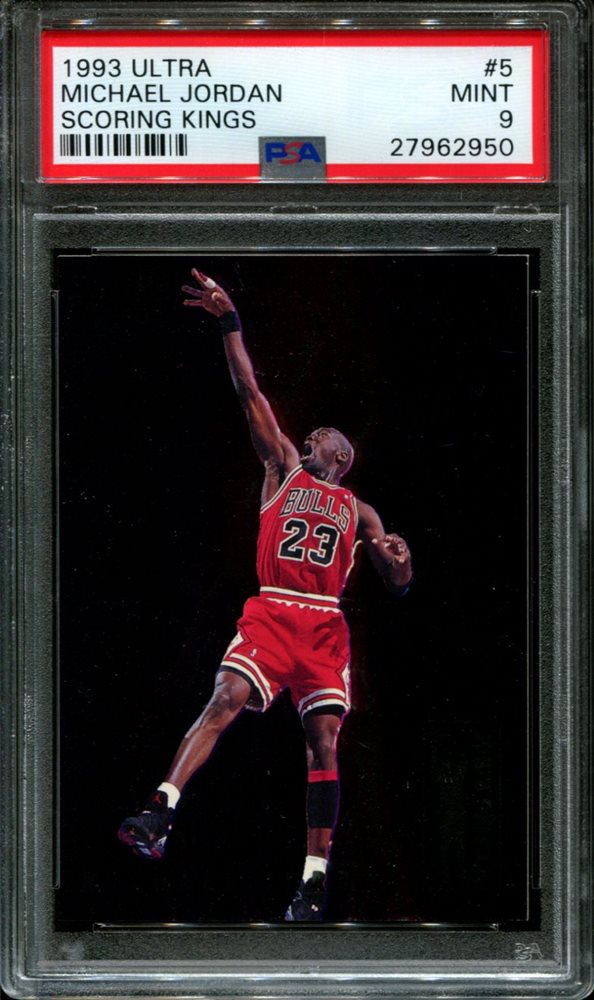 For instance, some of the most valuable rookie cards are from within the last few decades. The reason? Many of them are of cards that share a common feature: there’s only ONE in existence. When it comes to that kind of rarity the massed produced decade of the 90s has a hard trouble competing. Be that as it may, a classic card holds way more nostalgia than the newer styles. Regardless of how many of them were made!
For instance, some of the most valuable rookie cards are from within the last few decades. The reason? Many of them are of cards that share a common feature: there’s only ONE in existence. When it comes to that kind of rarity the massed produced decade of the 90s has a hard trouble competing. Be that as it may, a classic card holds way more nostalgia than the newer styles. Regardless of how many of them were made!
Basketball Cards Worth Money: Modern Era
Lebron JamesWhen it comes to modern day cards, nobody brings in the value like Lebron. For instance, the card shown here isn’t even a rookie card yet still sold for more than $15,000 in recent months. The reason? Scarcity. The card is a rare SSP that also touts a PSA 10 grade as it’s condition. Enough said.
Giannis Antetokounmpo
Shop Now eBay
In addition to James, another player who attracts big dollar signs is Giannis Antetokounmpo.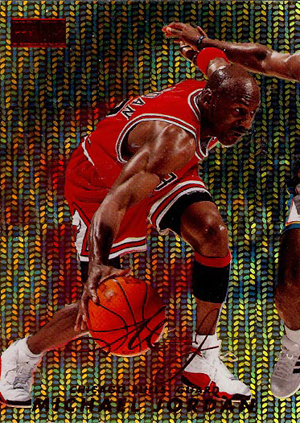 Just like the card above, this 2016 Gold Prizm is far from Giannis’ rookie season but still managed to rake in nearly $14,000 at a recent eBay auction. And also like the card above it’s incredibly rare and sports a PSA 10 grade. When compared to some of the rookie cards above, you can see just how much modern day scarcity can impact how much a money a basketball card is worth.
Just like the card above, this 2016 Gold Prizm is far from Giannis’ rookie season but still managed to rake in nearly $14,000 at a recent eBay auction. And also like the card above it’s incredibly rare and sports a PSA 10 grade. When compared to some of the rookie cards above, you can see just how much modern day scarcity can impact how much a money a basketball card is worth.
Don’t forget about the most valuable basketball cards of the 2000s!
Most Valuable Basketball Cards 1990s: Investment Strategies
Short (1 year or less)Sure, you may be able to make a small percentage gain over the short term but we tend to think bigger picture when it comes to iconic players. If you decide to go short watch the market closely and pick your spot. 7/10
Medium (1 to 5 years)As we just said, iconic cards, and thus iconic investments, deserve some time to mature.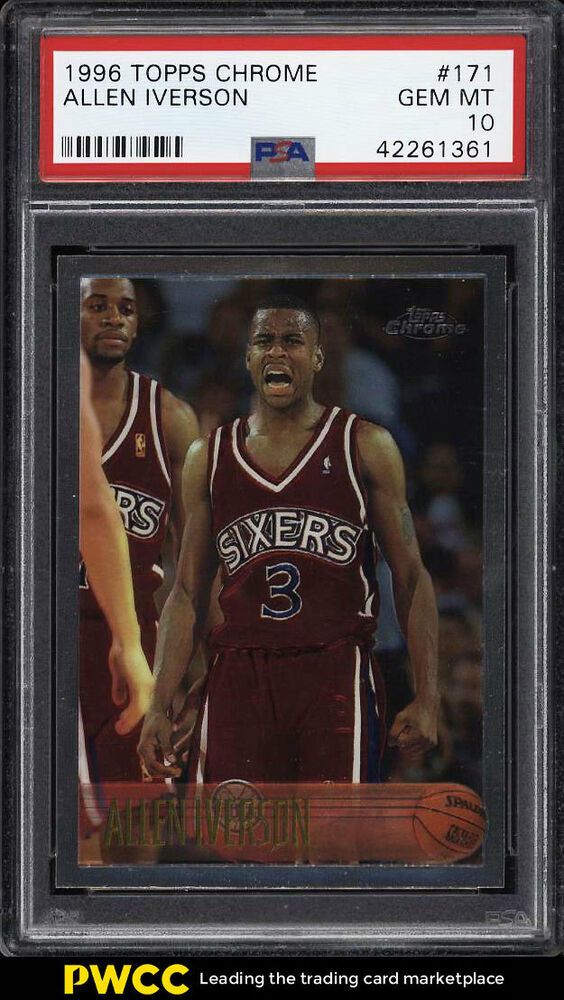 The sports card market has been on fire and if that trend continues many of these cards will see major increases over the next 5 years. Safe to say that would make some incredibly happy investors. 9/10
The sports card market has been on fire and if that trend continues many of these cards will see major increases over the next 5 years. Safe to say that would make some incredibly happy investors. 9/10
Long (5 years plus)We don’t think long-term often but with cards like these, it seems like the best bet. The faces on the front of these highly coveted collector items will ring out through the ages. Even if the market experiences a pullback you’ll likely see it rebound in a BIG way at some point in the long-term future. Sometimes the biggest gains take patience! 10/10
Check Out Our Other “Most Valuable” ListsMost Valuable Football Cards of the 1980s
Most Valuable Baseball Cards of the 80s and 90s
List of Most Valuable Lebron James Cards
Baseball cards - a whole empire: Americans have been collecting them for 150 years, speculators trade them on the stock exchange - His foot - Blogs .

In the US, the main collectible fetish is cards. The scale of this cult is amazing: they have been collected for a century and a half, exhibited in museums, books written about them and sold for space money.
💵 Cards were invented by marketers. They have nothing to do with sports
🏴 ̠ ̠ ̂ ̂ ̂ ̂ ̂ ̂ ̆ ̂ ̂ ̂ ̂ ̂ ̂ ̆ ̂ ̂ ̂ ̆ ̆ ̆ ̆ ̆ ̆ ̆ ̆ ̆ ̆ ̆ ̆ ̆ ̆ ̆ ̆ ̆ ̆ ̆ ̆ ̆ ̆ ̆ ̆ ̆ ̆ ̆ ˆ ̶-̆ ̶-̠ ̶-̠ ̶̶-̠ ̶-̠ ̶̶ ̶̶-̠ 110002 . In England at one time they were more popular than in the USA
🎬 Madonna and Tom Hanks can be found on baseball cards
⚾️ The popularity of cards grew due to boomers - the first post-war generation (the same ones that were born after World War II)
First on the cards instead of athletes there were leaders, birds, flags of countries
- I had a large collection of baseball cards. Everything was stolen.
– Did you take something else?
Yes, money. But let's focus on the essentials. I had a Topps card with Mickey Mantle, a unique piece. And others in good condition: 60/40 on the front and 90/10 on the back. All my cards were in packages, and if you take them out and take them, God forbid, with greasy fingers, they will instantly drop in price. I know the first 48 hours are the most important in this kind of investigation. The more time passes, the less likely it is to find them.
And others in good condition: 60/40 on the front and 90/10 on the back. All my cards were in packages, and if you take them out and take them, God forbid, with greasy fingers, they will instantly drop in price. I know the first 48 hours are the most important in this kind of investigation. The more time passes, the less likely it is to find them.
Dialogue from the first episode of the second season of Better Call Saul is a great illustration of how baseball cards are treated in the US. The unlucky collector went to the police because of the loss of an impressive and very expensive set, despite the fact that he himself was tied to the drug trade. But the disappointment of losing Mickey Mantle is much stronger than the fear of being caught. Many Americans would probably do the same, because a Mickey Mantle card in good condition can be worth $3 million.
Sports cards are a by-product of tobacco companies. In the 19th century, cigarettes were sold in soft paper packs: they were easy to crumple and damage the contents. The solution was found by the American company Allen & Ginter, which placed a cardboard stiffener in the package. Such protection had almost no effect on the cost of cigarettes, but it became a serious advantage for the buyer. Later, the innovation was adopted by other companies.
The solution was found by the American company Allen & Ginter, which placed a cardboard stiffener in the package. Such protection had almost no effect on the cost of cigarettes, but it became a serious advantage for the buyer. Later, the innovation was adopted by other companies.
Cigarette liners about Russia
To stand out from the competition, Allen & Ginter began to add a bonus to cigarettes: instead of a boring gray cardboard, a smoker was expected to have a beautiful postcard that he could leave as a keepsake. Millions of firms use such a primitive marketing ploy today, but in the 1870s it was a revolution. Manufacturers "hooked" smokers not only on cigarettes, but also on the excitement of the collector.
At first, the most neutral images were placed in the packages: nature, animals, birds, flags of the countries of the world, leaders of states, Indian chiefs. Sports had not yet taken such an important place in the life of Americans, although baseball was becoming more and more popular.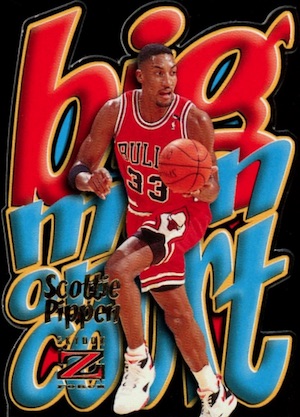 In the late 1850s, the first major organization of teams in and around New York City, the National Association, was founded. Ten years later, professional athletes appeared in baseball, and in 1876 a league was created that would become the basis for MLB at the beginning of the 20th century. Growing interest in the game prompted tobacco manufacturers to replace leaders with athletes.
In the late 1850s, the first major organization of teams in and around New York City, the National Association, was founded. Ten years later, professional athletes appeared in baseball, and in 1876 a league was created that would become the basis for MLB at the beginning of the 20th century. Growing interest in the game prompted tobacco manufacturers to replace leaders with athletes.
Ball game in New Jersey in 1866. Note: Initially, "baseball" was spelled in two words. The company sold sports equipment and printed price cards to educate customers about the products. On the other side, a player was looking at a potential buyer. And although such cards are considered the first baseball cards, they have not yet received wide circulation. Not everyone was interested in sporting goods, but Americans of the late 19th century loved to smoke.
One of the first baseball cards was issued in 1869 on a Peck & Snyder booklet. This spurred interest in the cards
It is easy to find a picture of any athlete on the Internet.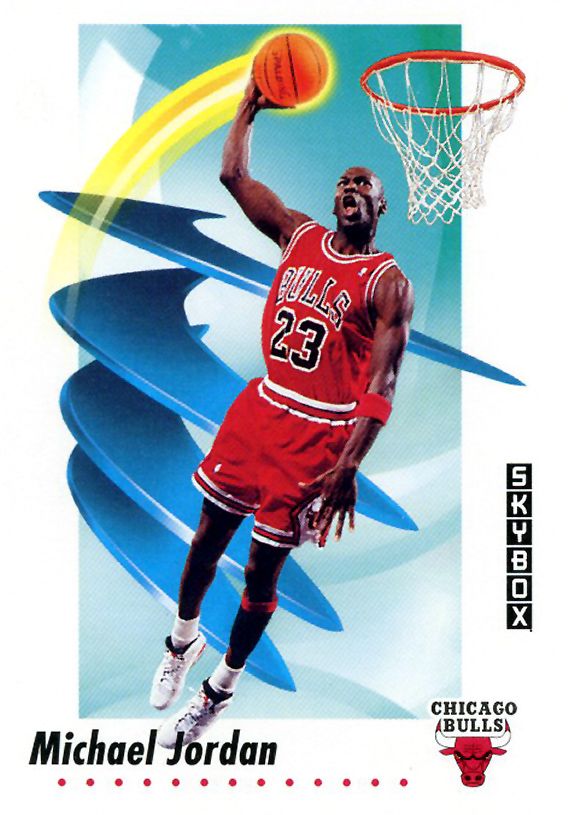 But in the second half of the 19th century, when the first series of baseball cards appeared, this was more difficult. Allen & Ginter approached the clubs directly to send pictures of their best players. By that time, the first photo studios had already appeared in New York and other large American cities.
But in the second half of the 19th century, when the first series of baseball cards appeared, this was more difficult. Allen & Ginter approached the clubs directly to send pictures of their best players. By that time, the first photo studios had already appeared in New York and other large American cities.
As a matter of fact, tobacconists placed cardboard boxes with pasted photographs in packs, and did not print them in a typographical way, so only a few copies of the first cards have survived to this day. The quality of photographic paper was then at a low level, and the Americans themselves did not yet realize the value of the collections. By the way, almost no one called inserts cards: then they bought and exchanged baseball or cigarette pictures.
Card set for the 1887 season
The most famous set of inserts of the time was produced in 1887. It was called World Champions, and today the original cards from that collection are selling on eBay for $2,000 each.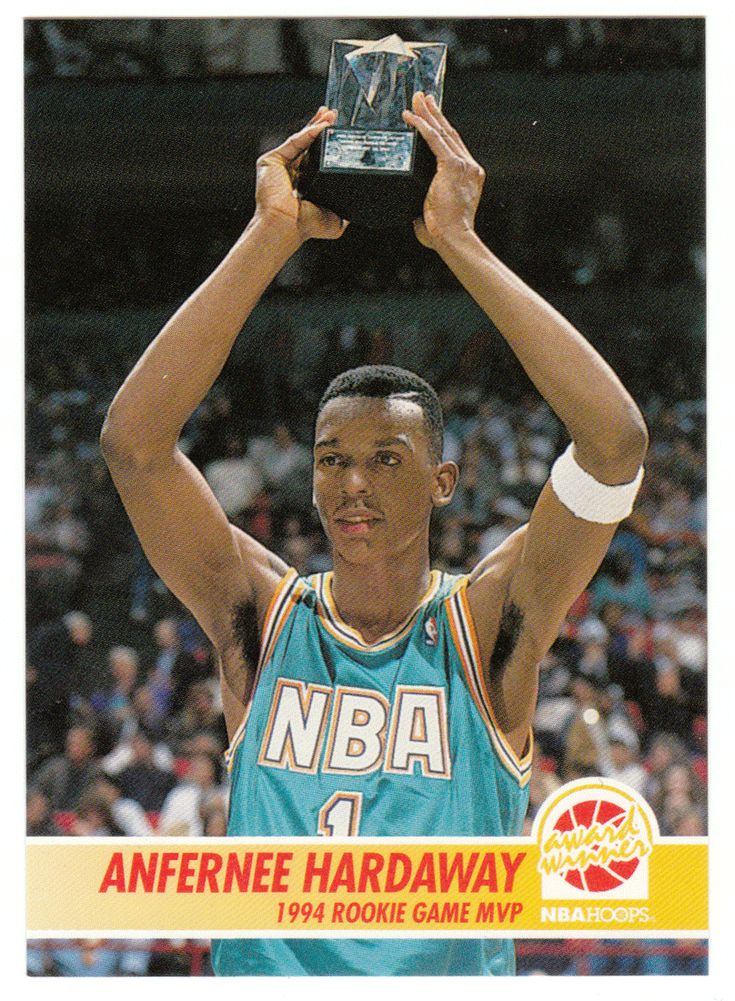 Interest in photos of players in 1887 was fueled by the events of that season: Detroit became the first superclub in the United States after it was acquired by the owner of a pharmaceutical company, Frederick Stearns.
Interest in photos of players in 1887 was fueled by the events of that season: Detroit became the first superclub in the United States after it was acquired by the owner of a pharmaceutical company, Frederick Stearns.
For the new project, Stearns bought out the entire Buffalo roster, including top Dan Brouters, Hardy Richardson and Jack Rowe, the stars on the World Champions cards. The businessman was not only interested in sports tasks, he wanted baseball to become a popular sport in Detroit. But he did not have enough money and time: after winning the 1887 World Series, Stearns announced the end of funding. Evidence of the rise and fall of America's first superclub was cigarette inserts.
Panini - the successor of cigarette cards in Europe
In the same 1887, the British firms W.D. &H.O. Wills and Ogdens - they have gone through the same evolutionary path as Allen & Ginter. In England, one of the first series was called Guinea Golds, it was dedicated to famous people - writers, politicians and scientists.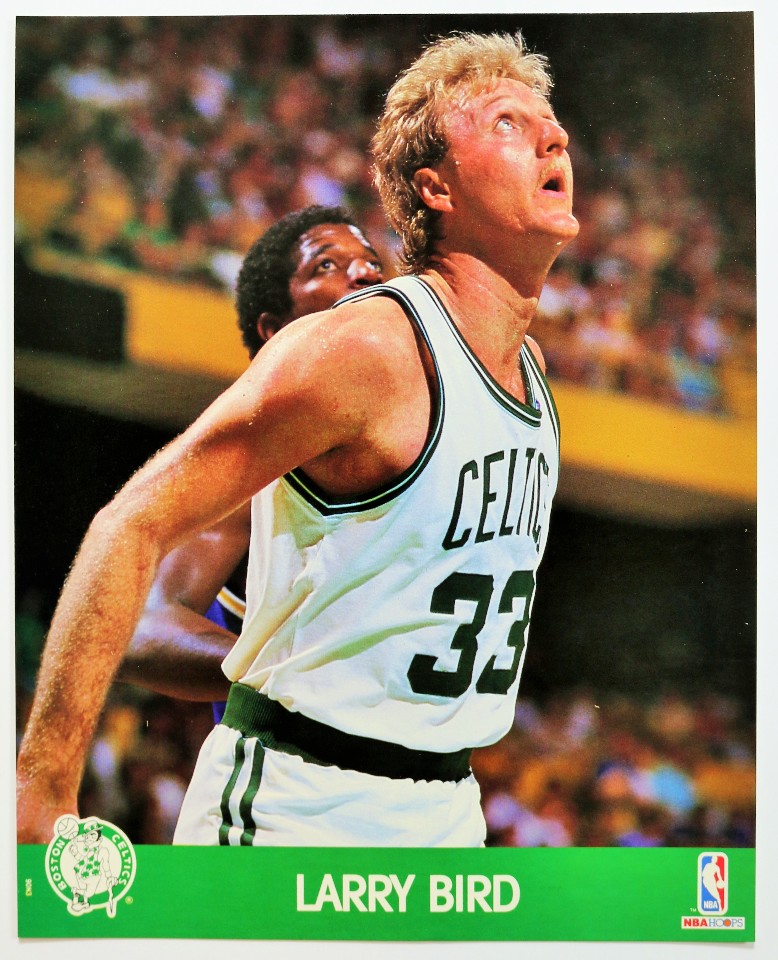 The people called the cards the worker's encyclopedia, as they were more accessible than books, and on the back there was a brief note on why the portrait of this man was placed in a pack of cigarettes.
The people called the cards the worker's encyclopedia, as they were more accessible than books, and on the back there was a brief note on why the portrait of this man was placed in a pack of cigarettes.
The originals for Guinea Golds were taken from the National Portrait Gallery in London
In 1896, a new line appeared - sports, but not yet football: W.D. &H.O. Wills produced a "50 Cricketers" series which was in good demand. The tobacco company was doing so well in those years that from 1886 until the beginning of the 20th century it opened three large production facilities. And this despite the fact that at the end of the 19th century smoking was not yet a mass phenomenon in Great Britain: the bad habit took root already during the First World War. In addition, cigarettes were quite cheap: at 19The 00s pack (sold 10 pieces each) cost two pence - one and a half times cheaper than a pound of sugar and twice as expensive as a box of matches. Now a complete set of those very cards with cricket players is valued at five thousand pounds.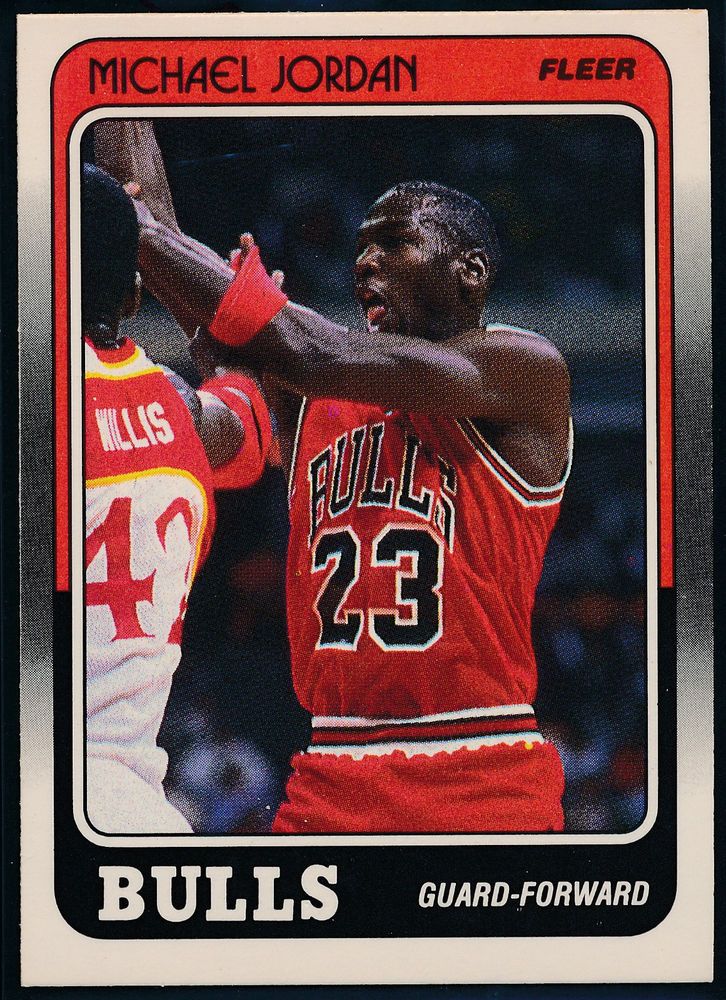
Football cards from Manchester Marcus & Company soon appeared. In response to a series of W.D. &H.O. released its own football line, which included 66 cards of the most famous football players of those years - George Clowley from Tottenham, Matt Kingsley from Newcastle, George Headley from Sheffield United, Jimmy Crabtree from Aston Villa and so on. Singleton & Cole enters consumer race with 19 series05 years. A hundred years later, it was reprinted specifically for retro fans.
At the beginning of the 20th century, almost every tobacco manufacturer issued such cards. But the companies tried to differ from each other: the liners of the cheaper cigarettes were black and white, the more expensive cigarettes were colored. Churchman produced them horizontally, and John Player & Sons used caricatures. Already in the 1920s, not just portraits of players, but illustrations of episodes of football matches began to be placed on the cards.
Birmingham defender Frank Womack on the 1914 card
The production of English inserts ceased during the Second World War, when Britain faced a shortage of paper.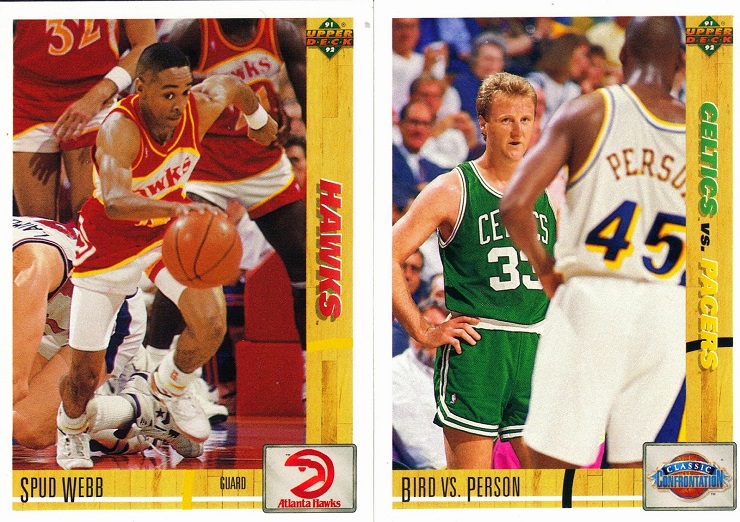 In the second half of the 20th century, cards were no longer considered a supplement to tobacco, they began to be sold separately. And then the idea was rethought by the Italian company Panini: in 1961, it released a series and an album for stickers dedicated to the national championship. Nine years later, the first set was released, timed to coincide with the World Cup.
In the second half of the 20th century, cards were no longer considered a supplement to tobacco, they began to be sold separately. And then the idea was rethought by the Italian company Panini: in 1961, it released a series and an album for stickers dedicated to the national championship. Nine years later, the first set was released, timed to coincide with the World Cup.
Baseball card production may have disappeared due to robberies and monopolies
Allen & Ginter also had a following in the US. The system of licensing and sale of rights was then still in its infancy, so almost all market participants began to offer cigarettes with inserts to customers. At that point, the cards stopped having the desired effect, and many firms printed them only because others did.
From the 1890s, the American Tobacco Company dominated the US tobacco market, seeking to expand into foreign markets dominated by the British. The monopolist has taken over small businesses, and Allen & Ginter is no exception. At the same time, baseball cards were no longer added to cigarettes everywhere: there was essentially no one to fight for the consumer, and the idea itself, as it seemed to many then, had already exhausted itself.
At the same time, baseball cards were no longer added to cigarettes everywhere: there was essentially no one to fight for the consumer, and the idea itself, as it seemed to many then, had already exhausted itself.
At the beginning of the 20th century, the number of smokers was actively growing in the United States, but fewer inserts were produced. For example, in 1898, a large study by German scientists came out that linked bad habits and lung cancer. The cards were an incentive to buy tobacco, and the inserts were also popular with children. In the 1890s, each state had its own laws that related to the minimum age for buying cigarettes: from 14 to 24 years. And in 15 states, at different times, there was even a ban on the sale of tobacco.
It got to the point of absurdity: American newspapers wrote about teenagers who robbed stores, took cigarettes, took out all the cards, and left the rest at the crime scene. Such stories also pushed manufacturers to abandon the liners.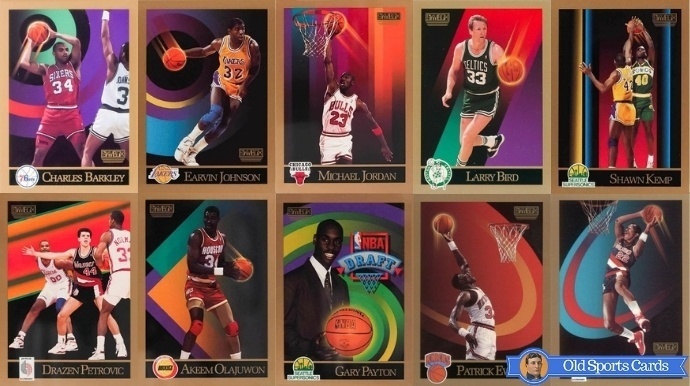
Sweets manufacturers cut cards in half for better sales
Sweets are not as strict as smoking, so Americans continued to be fueled with new cards. As soon as the tobacco companies began to print less of them, the Lancaster Caramel Company became more active. At the end of the 19th century, inserts with the image of baseball players appeared in packages of Hershey sweets. After the largest players in the market merged into the American Caramel Company, cards were already everywhere.
Just then, marketers came up with another move: the buyer received only half of the card, and he had to buy something else, in the hope that there would be a second part of the insert. It is difficult to calculate how much sales increased due to such tricks, but the American Caramel Company felt great until the First World War, when they had to stop making liners for several years. In 1927, the last series of baseball cards inside candy boxes came out from the American Caramel Company.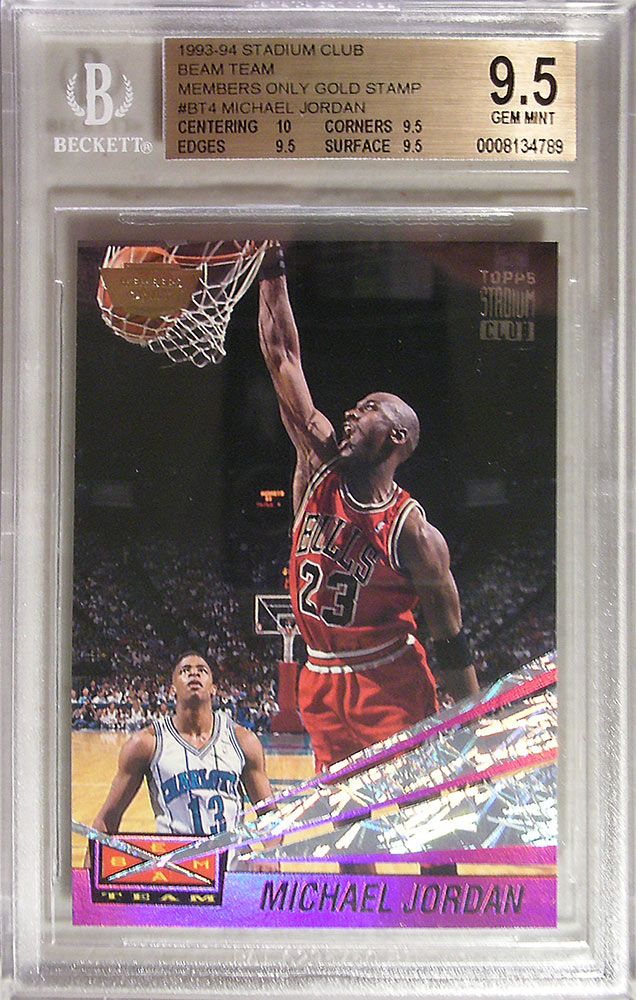
The appearance of inserts in sweets spurred children's interest in cards
In the interwar years, the culture of sports cards was again in decline. But it was no longer only about baseball, but also about other sports. In 1910, Imperial Tobacco Canada produced the first line of hockey cigarette inserts, but by the 1920s, their production was no longer so large-scale.
NHL inserts can trace not only the careers of players, but also major historical events. Canada entered World War II at 1939th, and the United States only two years later - therefore, wartime laws (for example, on saving paper) in Canada were adopted earlier. NHL player cards north of the border became smaller and black-and-white, and the United States issued the same inserts as before the war for two more years.
Canadian wartime card. They were produced by the O-Pee-Chee company until the takeover by Nestle in 1996.
American football was also gaining popularity, where manufacturers of cigarettes and sweets rushed. In 1884, Mayo Cut Plug Tobacco produced the first such set with 35 portraits of athletes. Later, images of football players appeared on packages of chewing gum, cereals and donuts.
In 1884, Mayo Cut Plug Tobacco produced the first such set with 35 portraits of athletes. Later, images of football players appeared on packages of chewing gum, cereals and donuts.
As soon as statistics were placed on the cards, it became easier for Americans to play with them.
In the second half of the 20th century, Topps became the main card company. At first she was engaged in sweets, but later she completely focused on cards. An innovation introduced in the 1950s helped to become the market leader: they began to print player statistics on the back.
At first it was just a line about how the athlete spent the last season, but since 1957 they began to put statistics for all years there. Bowman (Topps' most famous competitor at the time) immediately copied the idea, and within a few years almost all sports cards contained statistics.
The best way to find out how a baseball player performed in the past is to look at the back of his card. Since the end of the 19th century, Americans have been building playing decks from inserts and inventing the rules themselves. The appearance of statistics on the back made it possible to unambiguously determine which card is older.
The appearance of statistics on the back made it possible to unambiguously determine which card is older.
On the cards of 1974 there are players of a non-existent team
The Panini album cover for the 2018 World Cup featured Kokorin. The company simply did not have time to change the layout after Alexander tore the crosses. In 1974, Topps made a far more unforgivable blunder. She released a set of cards for a club that never existed.
The San Diego Padres baseball team was a total underdog, finishing last in the division time after time. Against this background, negotiations began to move from California to Washington. May 1973 years the club was sold for a then-record $12 million. The new team - "Washington" - was supposed to play in MLB as early as next season.
Uniforms were sewn and photographs of the players were held. Soon the pictures ended up in Topps, where they immediately set up the production of cards. Since only a handful of baseball players participated in the photo shoot, Topps also took old shots of the players still representing the San Diego Padres, but added the caption "Washington" to them.
Pitcher Dave Freisleben cards are the main curiosity of season 1974 years
At the last moment, the deal fell through, but the conveyor was already running. Topps had to urgently issue cards with old photos and old uniforms. At the same time, the Washington edition was already sold with might and main, and many collectors with special pride keep cards with the image of the players of the never-existing team. True, there were so many of them that the price of each copy rarely exceeds $ 10.
The baseball card bible comes from the museum
Cards from the late 19th and early 20th centuries are equated with works of art. This is the only way to explain why one of the largest collections is kept in the Metropolitan Museum of Art in New York. It bears the name of Jefferson Burdick: all his life the American collected almost everything that caught his eye: posters, postcards, cigarette packages. And cards, and not only sports ones.
Rembrandt, Degas, Van Gogh and baseball cards are all masterpieces of one museum
Burdick donated the collection to the museum at the end of 1940s, but only after he prepared an extensive guide to all the collected cards - this was the requirement of the museum.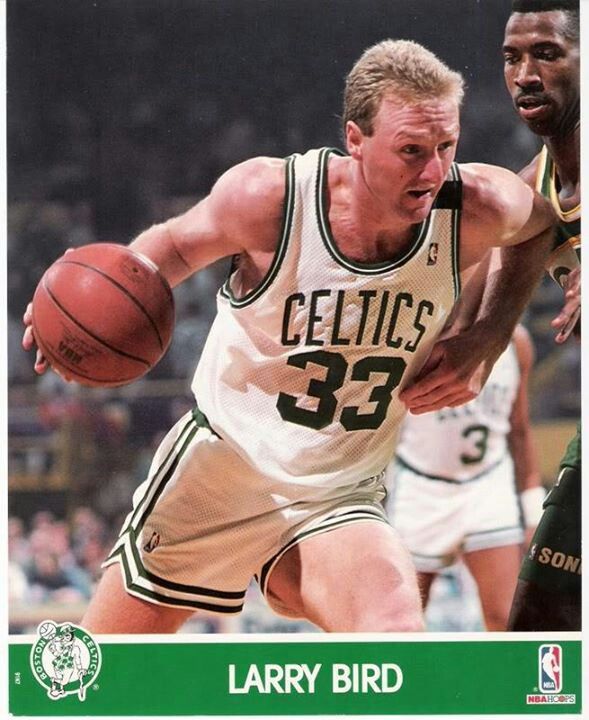 The book "Catalogue of American Cards" among collectors has received a cult status. It is full of information about both sports inserts and other cards issued in the 19th and first half of the 20th century.
The book "Catalogue of American Cards" among collectors has received a cult status. It is full of information about both sports inserts and other cards issued in the 19th and first half of the 20th century.
The catalog not only described their origin, but also systematized the search. Many cards have received an inventory number, which usually consists of a letter (denoting the manufacturer) and several numbers (indicating the series). The marking is still used today, and sometimes a number is enough for experienced collectors to understand what kind of rarity they are talking about.
Jefferson Burdick and his catalog
The last edition of the catalog was published during Burdick's lifetime, in 1960, and no new editions have been commercially available for the past half century. Since then, there have been regular conversations about the need to supplement the list with new cards. There are a number of inaccuracies in the book, and the numbering system is considered outdated.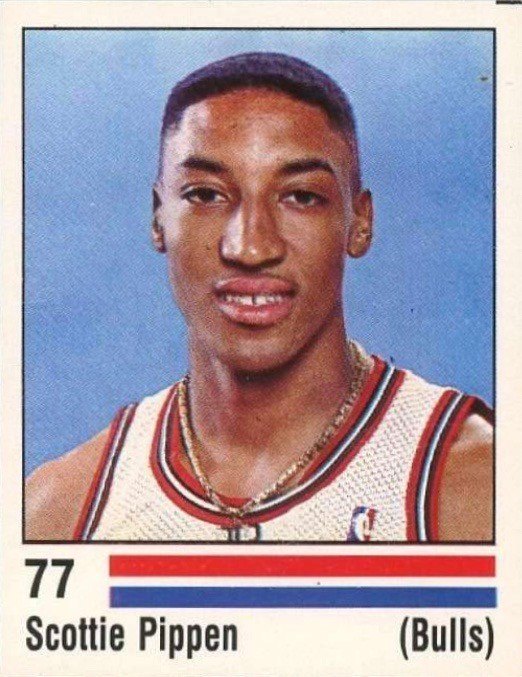 In addition, Burdick indicated in the catalog prices that, after half a century, have lost their relevance.
In addition, Burdick indicated in the catalog prices that, after half a century, have lost their relevance.
Today, a special company determines the value of a card. It has already issued 80 million certificates of authenticity
In the post-war years, sports cards became popular again, especially among children. They were treated like toys, and collecting was more like how schoolchildren in the 1990s collected caps: they look cool, you can show off in front of friends, but hardly anyone exaggerated their value.
The feeling of nostalgia changed everything. By the 1970s, the children of the post-war generation had grown up, dug up old boxes of cards, and formed a whole culture around inserts. If at 19In the 60s, a dollar could be offered for a rare copy, but a few decades later, a real industry arose, in which millions of Americans were involved.
In 1991, US residents spent more than two billion dollars on sports cards. They were now considered not only part of the collection, but also an investment. Price dynamics indicated this: the cost of some mid-20th-century Topps sets has increased in price by 10 percent annually since 1981. The Americans logically assumed that this would always continue and not only with old cards. The main thing is to ensure the safety of the artifact, for which they no longer buy albums, but cases, organizers, and the most valuable rarities are wrapped in strong plastic protection.
Price dynamics indicated this: the cost of some mid-20th-century Topps sets has increased in price by 10 percent annually since 1981. The Americans logically assumed that this would always continue and not only with old cards. The main thing is to ensure the safety of the artifact, for which they no longer buy albums, but cases, organizers, and the most valuable rarities are wrapped in strong plastic protection.
In 1992, for a promotional film about women's baseball, the film studio released a series of cards with Madonna and Tom Hanks. Its employees, like appraisers in a pawnshop, carefully examine the goods and set a price according to certain criteria. In 1998, PSA processed a million cards, and today on eBay, those lots are valued primarily where there is confirmation of authenticity from this company. More than 80 million such certificates have already been issued, however, some of them relate to other sports attributes, such as autographed balls.
The Baseball and Card Crisis
And yet, in the 1980s and 1990s, the industry was filled with people who were not particularly interested in sports, but really wanted to make money. Collectors bought up fresh copies in the hope of selling them in a few decades and providing old age or college education for children.
Collectors bought up fresh copies in the hope of selling them in a few decades and providing old age or college education for children.
Increased demand spurred companies to print hundreds of thousands of cards. Topps succeeded (or even overdid it) in this matter: in the 1990s, it flooded the market with a large number of cards, supplementing them with player autographs printed on the printing house and colorful design solutions. But the value of those collections is unlikely to ever be significant: that time was nicknamed the Great Bubble or the Age of Trash Cards. Now collectors are warned on the packaging: "Topps makes no guarantees as to whether the cards will rise in price in the future."
A full set of cards from last season of MLB (and there are 700 of them) costs about $50
The lockout in the 1995 season was an additional blow to the industry. Because of the athletes' strike, that MLB season ended in August instead of the fall. This affected card sales, and Topps, which owned the licensing rights, tried to refocus on other sports.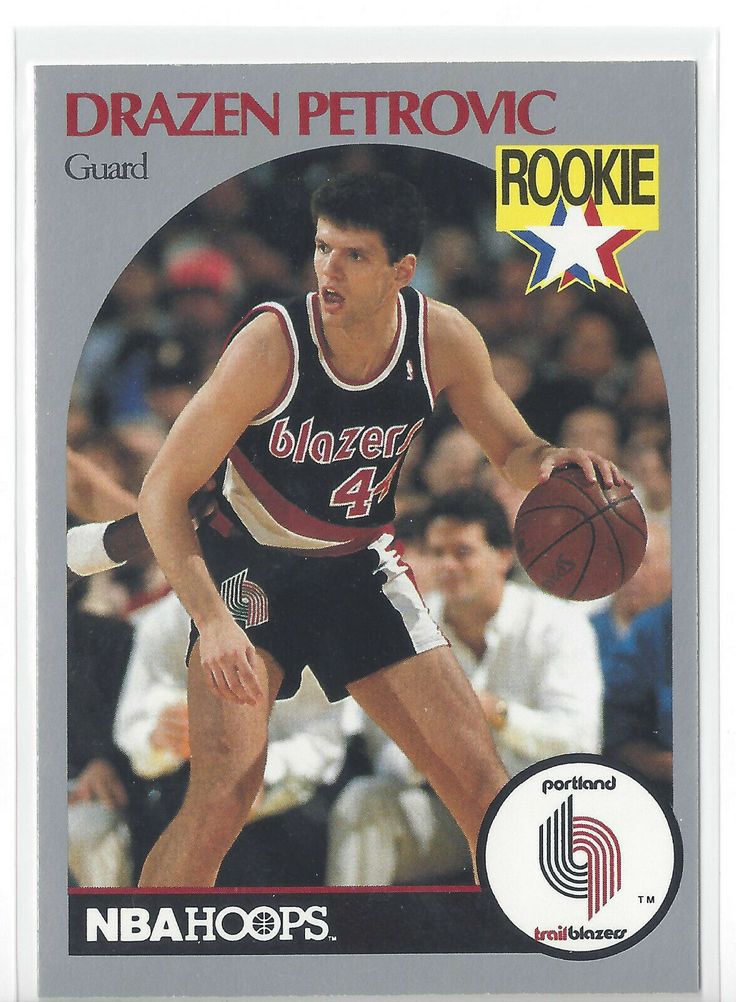 Then came the NHL and NBA lockouts, causing the economic bubble to finally burst.
Then came the NHL and NBA lockouts, causing the economic bubble to finally burst.
The boom in the baseball card market was followed by a disappointment in the sport itself. Playing with bats, bases and pitchers seems boring to the new generation against the backdrop of basketball, American football, hockey and even soccer. In MLB, events unfold slowly, there are many matches, and in terms of decibels in the stands, baseball hardly overtakes golf. It takes a lot of patience and endurance to watch the match from start to finish. At least that's what some young Americans think. And if they are not interested in baseball, then they are unlikely to enjoy collecting cards with portraits of players.
One of the rarest sets of the 1990s was released in connection with the Gulf War
The non-stop circulation of baseball cards has led to a paradoxical situation: collectors are willing to pay much more for a set that is at least somewhat different from the standard one. Thus, the Desert Shield, a special edition released in 1990 for US troops, is considered an extraordinary rarity.
The name of the set refers to the Gulf War. Desert Shield is a military operation inspired by Saddam Hussein's invasion of Kuwait. Tens of thousands of soldiers went to the Middle East, and some received a set released for the MLB 19 season with them on the road.91 years old.
On the left is a card for 20 dollars, on the right - for 14 thousand
It was issued by the same Topps company, which, however, on the occasion of the war, slightly supplemented the appearance of the cards: a small logo of the military operation was applied on top. They did not go to retail; a total of 7000 sets were produced, which is noticeably less than the standard circulation. Moreover, some of the cards were sent to the Middle East by plane, and, perhaps, not all sets reached the place of deployment of the American army.
The soldiers hardly realized that in the future the cards would be very valuable, so many threw them away without much regret. Perhaps somewhere in Iraq a fortune is buried in the sand: in 2018, a complete collection of 792 pieces was sold for $100,000. The regular cards of the 1991 MLB season are absolute trash.
The regular cards of the 1991 MLB season are absolute trash.
The first attempt to trade cards as shares on the stock exchange was unsuccessful
Topps started by selling gum with liners. Now cards are her main business. In order not to go broke, in the early 2000s, the company came up with a new way to earn money: for 12 years in the United States there was an online card exchange, where each lot existed in electronic form.
The 1909 card is the most expensive card in baseball history. An image of Honus Wagner was sold for $3 million
Collectors were offered what looked like buying securities. An investor does not need to keep a share of the company in a safe, because it is accounted for in his brokerage account. eTopps, a platform for those who invest in sports cards, worked on the same model.
The actual cardboard copies were kept in the warehouse of the company, which was ready to send the purchase on demand, but it was assumed that the buyers only needed to know what they owned in order to later sell on the same exchange.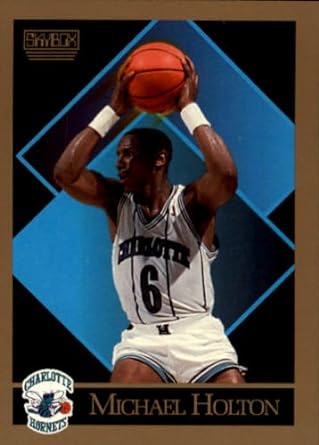 The model did not work, and in 2012 the project was closed. All buyers were offered to order the delivery of cards and trade them on Ebay.
The model did not work, and in 2012 the project was closed. All buyers were offered to order the delivery of cards and trade them on Ebay.
The cards have their own market index - just like the S&P500
The "major league" of baseball card collecting has formed around the PWCC. Under this mysterious abbreviation is a company that not only evaluates rare items, but also tracks their value. This is how the index of the most expensive cards was formed, which, by analogy with the S & P500 (the American stock index, it is compiled by the analytical agency Standard & Poor's) was called PWCC 100.
On the graph of the growth in the value of assets, the user of the service is hinted that baseball cards are more profitable than stocks of the five hundred best US companies. Since 2008, shares have risen in price by 100%, and the most expensive cards have become even more expensive by 250%.
Thanks to PWCC, there is a renewed interest in selling collectible sets in the USA. It just got harder to make money. Only the rarest specimens can generate income, but now it is much more substantial. Say, in 2017, $50 million worth of cards were sold through the PWCC platform.
It just got harder to make money. Only the rarest specimens can generate income, but now it is much more substantial. Say, in 2017, $50 million worth of cards were sold through the PWCC platform.
Entrepreneur Brady Hill is one of those who made a fortune from this hobby. In his youth, he sold cards to buy a car and drive it to Louisiana to study at a local university. Years later, Hill decided to find out how much the cards he kept in the safe were worth, and he was pleasantly surprised. In the early 2010s, he invested 20% of his family's capital in rare pieces, hoping that this would be a good investment.
Brady Hill with million dollar cards (only in hand)
In 10 years, the 1952 card with Mickey Mantle (there are only 33 of these in the world) has risen in price seven times. Image of Hank Aaron 1953 - at nine. All of these cards are in the Brady Hill collection. In 1983, he watched the young and promising Darryl Strawberry of the New York Mets play. He failed the match, after which the 13-year-old Hill became disillusioned with Darryl.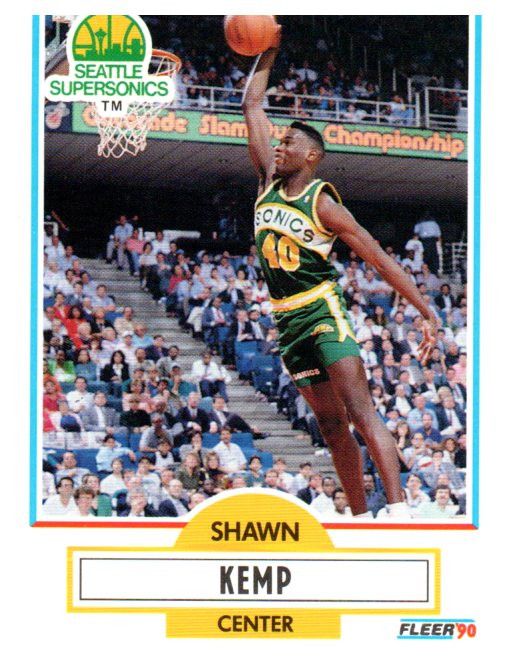 On his father's advice, he traded the Strawberry card for the now retired Mantle and Aaron. At the PWCC auction in May of this year, the Mantle card 19The 52nd was sold for $97,000.
On his father's advice, he traded the Strawberry card for the now retired Mantle and Aaron. At the PWCC auction in May of this year, the Mantle card 19The 52nd was sold for $97,000.
However, it is very difficult to determine in advance when and how the price will rise. Many cards from the list of the most expensive over the same period have significantly fallen in price. “I have cards that cost between $600,000 and $700,000 in total,” Brady Hill said. “But besides them, there are a thousand other cards in my collection that cost noticeably less. In this case, supply must meet demand. There is no point in buying the rarest card if no one wants to buy it from you.
Bradley's passion is balancing between art collecting and trading. It's pretty hard to make money on this, although many Americans hope to one day go to eBay and see a card from their collection with a crazy price tag. Perhaps for this reason, clickbait headlines such as "The 10 Best Baseball Cards to Invest" or "If you have THIS card, you can become a millionaire" are regularly thrown to American fans on the Internet.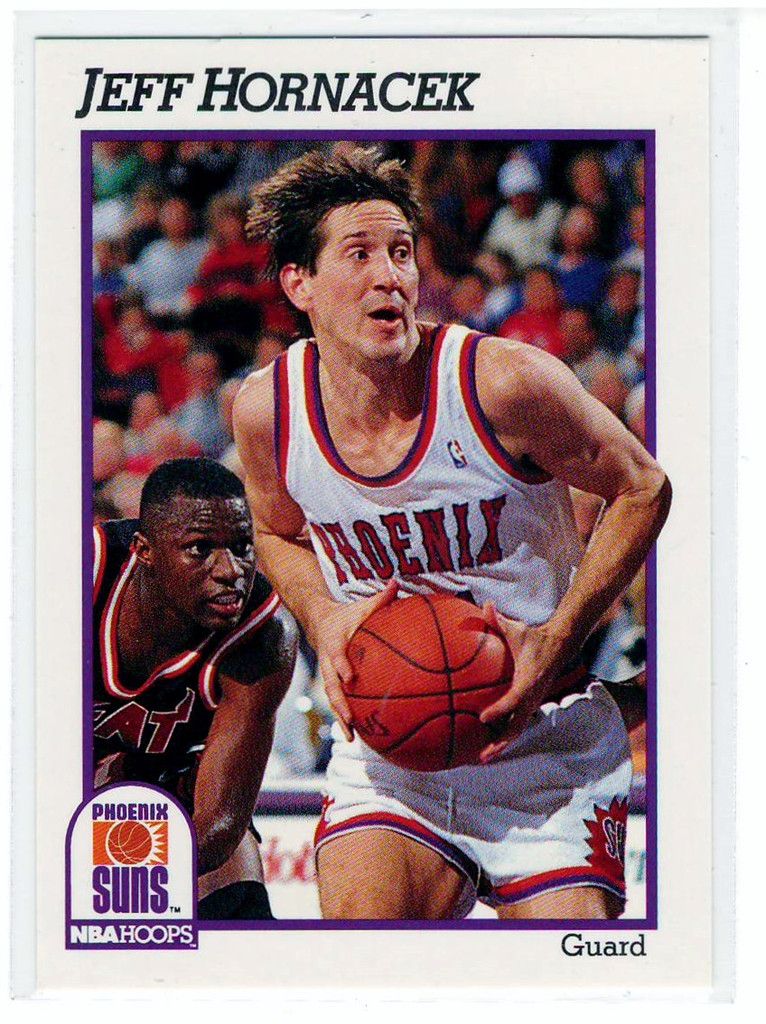
***
In 2006, the Allen & Ginter brand (the one that made Americans love sports earbuds) was revived by Topps. But cigarettes under this trademark are no longer produced, now it specializes only in baseball cards. A by-product and the desire to interest the buyer with a pleasant trifle in the form of a beautiful insert determined the image of the company. In the view of Americans, Allen & Ginter is not about tobacco, but about sports.
Photo: Gettyimages.ru/Chris McGrath, Steve Exum, George C. Beresford; The New York Times/Ruth Fremson
What is Bill Limbear's salary?
Laimbeer's highest career salary was $1.5 million in 1990 by the Pistons. It's the same as earning about $3 million a season right now
...
Bill Limebeer Net Worth.
| Net Worth: | $13 million |
| Gender: | M |
| Occupation: | Trainer |
| Nationality: | United States of America |
Likewise, how much is Isaiah Thomas' newbie card worth? Isaiah Thomas # 109 1986 Flir
| Sale date ▲ ▼ | Name ▲ ▼ | ▲ ▼ Price |
| 2021-11-24 | ISIAH THOMAS Fleer ROOKIE 1986 Basketball Card No.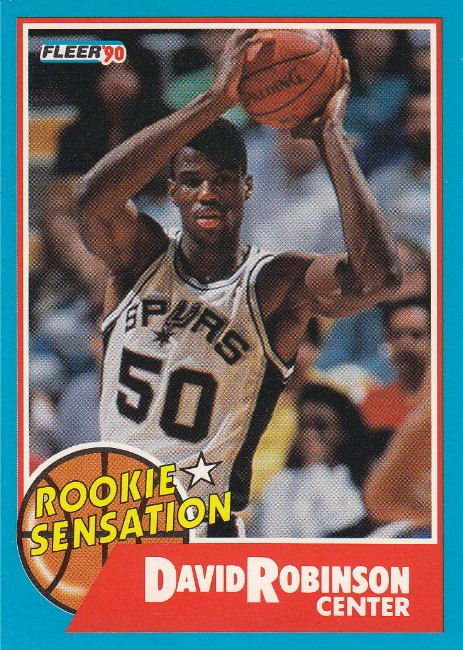 109 Detroit Pistons PSA 7 NM 109 Detroit Pistons PSA 7 NM | $99.99 |
| 2021-11-20 | 1986/87 Flir #109 Isaiah Thomas RC PSA 7*6135 | $95.95 |
| 2021-11-09 | 1986 Fleer Basketball #109 Isaiah Thomas Pistons RC Rookie HOF PSA 7 NM | $85.00 |
Are Bill Laimbeer and Isaiah Thomas friends? He always played tough, but almost never heard a good word about him from an opponent. Even his teammate and close friend, Isaiah Thomas , once said, "If I didn't know Bill, I wouldn't like him either." Why was he so hated? He voiced his opinion during his playing days, but it is much more than his beliefs.
Also, how much was Wilt Chamberlain worth at the time of his death?
Wilt Chamberlain Net Worth: Wilt Chamberlain was an American basketball player worth $ $10 million at the time of his death.
How much is the 1990 Isaiah Thomas card?
Isaiah Thomas Basketball Trading Card Meanings
| 1983 All-Star Game #11 Isaiah Thomas | $12.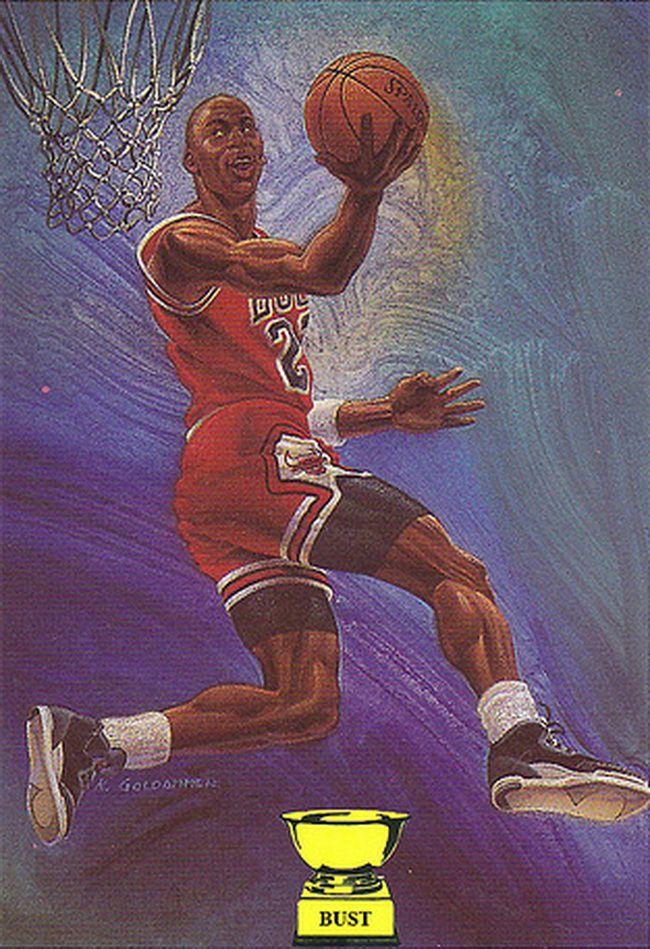 53 53 |
| 1990 Panini Stickers #F Isaiah Thomas | $2.03 |
| 1990 SkyBox #93 Isaiah Thomas | $0.34 |
| 1991 Flir #64 Isaiah Thomas | $0.34 |
| 1991 Fleer Schoolyard #2 Isaiah Thomas | $0.34 |
How much is rookie Scottie Pippen worth? The value of Scottie Pippen's Rookie card will vary. Between $1 and $1500 depending on which version you are considering and what its status is.
How much is Chris Webber's rookie card? Chris Webber #1 1993 classic
| Sale date ▲ ▼ | Name ▲ ▼ | ▲ ▼ Price |
| 2020-11-27 | 1993 Classic Chris Webber #1 ROOKIE Card RC PSA 10 Gem Mint | $49.99 |
| 2020-08-19 | 1993 Classic Chris Webber GOLD BCCS Novice Card Graded Slabbed 10 mint | $19.98 |
| 2020-06-25 | 1993 classic CHRIS WEBBER #1 PSA 10 GEM MT | $75. 23 23 |
Why is Bill Laimbeer so successful? Four-time All-Star Laimbeer became the 19th player in league history, over 10,000 points and 10,000 rebounds0244 . He had a special flair for defensive rebounding, and was able to land long shots and take free throws.
What is the net worth of Dr. Jay?
Julius Erving Net Worth: Julius Erving is a retired American basketball player and current entrepreneur with a net worth of $ $50 million .
...
Julius Erving Net Worth.
| Net Worth: | $50 million |
| Height: | 6 ft 6 in (2 m) |
| Occupation: | Basketball player, Actor |
| Nationality: | United States of America |
How much is Kobe Bryant worth? Kobe Bryant died on January 26, 2020 at the age of 41 in a helicopter crash along with his 13-year-old daughter Gianna and 7 other passengers. His net worth at the time of his death was about $600 million .
His net worth at the time of his death was about $600 million .
How much are Charles Barkley's cards worth?
Charles Barkley Basketball Trading Card Value
| 1985 JMS #4 Charles Barkley | |
| 1993 Topps #373 Charles Barkley | $0.34 |
| 1993 Topps #393 Charles Barkley | $0.34 |
| 1993 Topps Gold #1 Charles Barkley | $0.41 |
| 1993 Topps Gold #104 Charles Barkley | $0.34 |
How much is Patrick Ewing's rookie card worth? Patrick Ewing # 32 1986 Flier
| Sale date ▲ ▼ | Name ▲ ▼ | ▲ ▼ Price |
| 2021-11-09 | 1986 FLEER BASKETBALL #32 PATRICK EWING RC ROOKIE KNICKS PSA 9NEW | $560.00 |
| 2021-11-09 | 1986 Fleer #32 Patrick Ewing Rookie PSA 9 Card NEW | $525.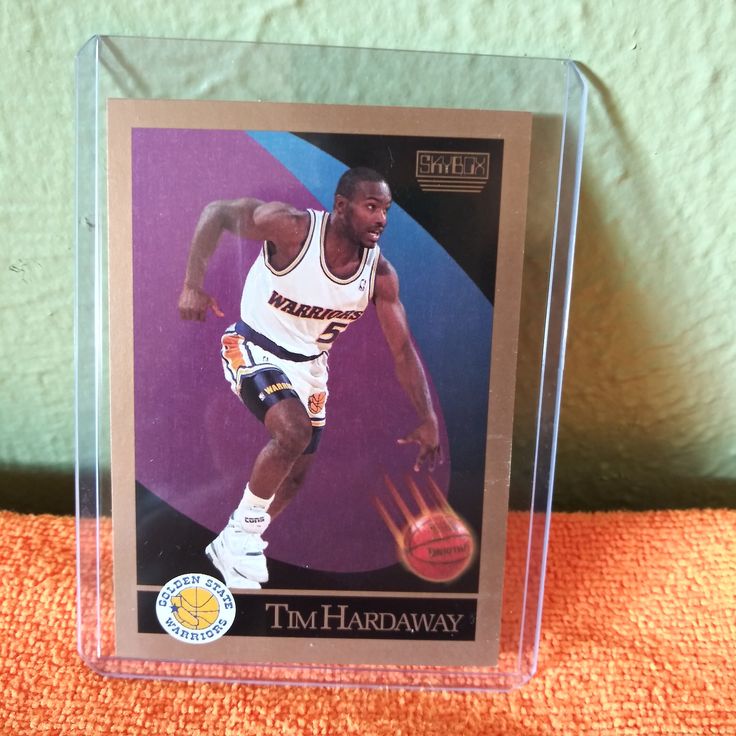 00 00 |
| 2021-11-08 | 1986 Fleer Basketball #32 Patrick Ewing Knicks RC Rookie HOF PSA 9 NEW | $455.00 |
Which basketball cards cost money?
Guide to the 52 Most Valuable Basketball Cards
- 1948 Bowman #69 George Mikan. …
- 1957 Topps #77 Bill Russell. …
- 1986 Fleer #57 Michael Jordan. …
- 1980 Topps Larry Bird / Julius Erving / Magic Johnson. …
- 1969 Topps #25 Lew Alcindor (Kareem Abdul-Jabbar) Rookie card. …
- 1961 Flier No. 8 Wilt Chamberlain. …
- Sticker Prism Jewel 1985 Michael Jordan.
How much is Dennis Rodman's card?
Dennis Rodman Basketball Trading Card Value
| 1988 Fleer #43 Dennis Rodman | $25.53 |
| 1992 Topps #137 Dennis Rodman | $0.34 |
| 1992 Topps Gold #117 Dennis Rodman | $0.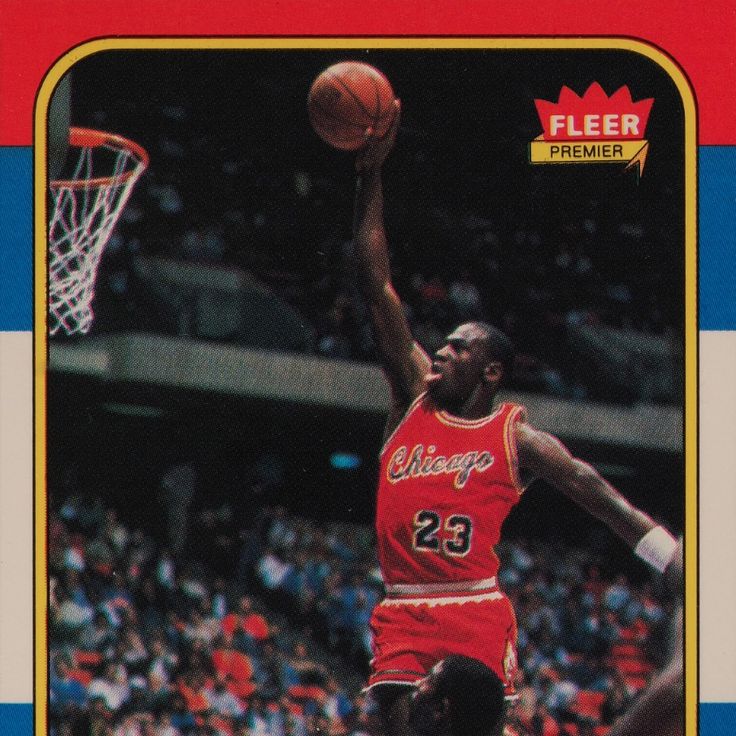 34 34 |
| 1992 Topps Gold #137 Dennis Rodman | $1.35 |
| 1992 Ultra All NBA Team #11 Dennis Rodman | $1.52 |
How much is Dennis Rodman's rookie card? Dennis Rodman #43 1988 Flier
| Sale date | Title | ▲ ▼ Price |
| 2021-12-27 | 1988 Fleer Dennis Rodman #43 Rookie Basketball Card #43 | $25.00 |
| 2021-12-27 | 1988-89 Fleer #43 DENNIS RODMAN NM RC Rookie Detroit Pistons Basketball #43 | $36.00 |
| 2021-12-27 | 1988 Fleer Dennis Rodman #43 Rookie Basketball Card #43 | $19.99 |
How much is Troy Aikman's newbie card worth? Troy Aikman Novice Cards
| Item Name ▼ | Price |
| TROY EIKEMAN 1989 PRO SET CARD BEGINNER DALLAS COWBOYS | $9. 95 95 |
| Troy Aikman 1989 Topps #70T Dallas Rookie SGC NM/MT+ Football Card | $89.99 |
| TROY AIKMAN 1990 Topps Super Rookie Card RC #482 Dallas Cowboys NFL like new | $5.00 |
| TROY AIKMAN cowboys 1989 Topps Traded #70T Rookie Card RC | $1.00 |
How much is Alonzo Mourning Newbie Card?
Tip:
| Name | Supply | PSA 10 |
| Alonzo Mourning #393 [RC] | Topps (1992) Topps (Basketball) | $33.35 |
| Alonzo Mourning #2 [RC] | 1992 All Rookie Hoops Magic (Basketball) | $109.28 |
| Alonzo mourning # 60 | 1992 Classic Draft Pick (Basketball) | $30.00 |
| Alonzo Mourning [Precious] # 226 | 1996 Metal (Basketball) | |
How much is the Reggie Miller card? Hint:
| Name | Supply | PSA 10 |
| Reggie Miller #24 | Topps (1997) Topps (Basketball) | $34. 99 99 |
| Reggie Miller # 341 | Upper Deck (1996) Upper Deck (Basketball) | $47.92 |
| Reggie Miller # 187 | Topps (1993) Topps (Basketball) | $46.51 |
| Reggie Miller #11 | 1992 Fleer Team Leaders (basketball) | $254.37 |
How much is the LeBron James rookie card worth?
See also
Collectors continue to search for rare and valuable LeBron James cards. Goldin Auctions set a new price record when the Upper Deck Exquisite Rookie Patch Autograph sold for over $2 million in 2003-04. The map received a rating of 9Bulgarian pounds.
What is the net worth of Dennis Rodmans? He was a multiple-time NBA All-Defensive First Team and NBA Defensive Player of the Year award. As of 2022, the net worth of Dennis Rodman is $,500 thousand USD .
...
| Net Worth: | 500 thousand US dollars |
| Date of birth: | May 13, 1961 |
| Country of origin: | United States of America |
| Source of wealth: | Professional NBA player |
| Last update: | 2021 |
• November 30, 2021
Is Mark Aguirre a Hall of Famer?
Mark Aguirre: Honestly, Aguirre is a member of the National Collegiate Basketball Hall of Fame , but he's still waiting for his admission to the Hall, which really matters.